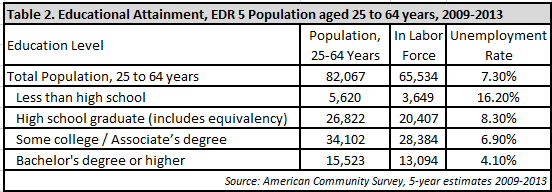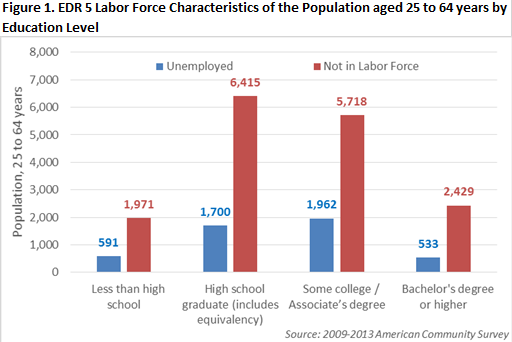 The presence of such industry powerhouses as Polaris, Arctic Cat and New Flyer make Northwest Minnesota a hub of transportation equipment manufacturing.
The presence of such industry powerhouses as Polaris, Arctic Cat and New Flyer make Northwest Minnesota a hub of transportation equipment manufacturing.
From wheat and potatoes to soybeans and sugar beets, the region is a major producer and processor of food staples and specialty agricultural products.
Want the freshest data delivered by email? Subscribe to our regional newsletters.
9/22/2015 10:30:38 AM
Chet Bodin
The educational attainment of a community is often a major factor in how well its economy performs. A well-educated workforce can spur innovation, increase production, and promote growth. Sometimes though, the education level in a community can be out of sync with what employers need, or employment opportunities might not satisfy job seekers. Most of the time it's a little of both.
This appears to be the case in Economic Development Region 5 (EDR 5), which is made up of Cass, Crow Wing, Morrison, Todd and Wadena counties. Looking at data from DEED's Job Vacancy Survey and educational attainment statistics from the American Community Survey, there appears to be some disparity between the education levels of workers in the region and the training requirements of the job vacancies that employers are posting.
The results of the Job Vacancy Survey from the second quarter of 2015 were recently released, showing that two-thirds of vacancies in EDR 5 require a high school education or less (see Table 1). Not surprisingly, the median wage offer of $10.24 was relatively low when compared to the state, which had a median wage offer of $12.99. We discussed a similar wage discrepancy based on Job Vacancy Survey results in the Local Look blog back in June.

Though it may seem low that only 35% of job vacancies in EDR 5 require postsecondary education, that number has remained relatively consistent in the past couple years, ranging between 23% and 40% over the past five survey periods. On the surface, this appears to be a good match with the local workforce - considering only about 30% of EDR 5 residents between the ages of 25 and 64 years have attained a postsecondary degree, according to data from the U.S. Census Bureau's American Community Survey. That only counts people who have received an associate's, bachelors, or higher degree, though. When people with some college but no degree are factored in, the balance shifts considerably. In sum, nearly two-thirds (63.3%) of EDR 5's 25 to 64 year old labor force participants have some college experience, while the other 36.7% have a high school diploma or less (see Table 2).

Those with no postsecondary education made up a smaller portion of the labor force and tended to have higher unemployment rates in EDR 5. The group of residents with some college can also include those who may be working while earning a degree - an option that may become more popular given the rising cost of education. Workers with higher educational attainment tended to have lower unemployment rates.
In terms of the number of those looking for work (the unemployed), and those who may be available now or in the future but are not currently in the labor force, there are a lot more people with some college experience out there than employers might think or need.
Interestingly, the number of unemployed workers at both education levels is nearly identical in EDR 5. According to American Community Survey estimates, there were 2,291 unemployed people with a high school diploma or less in the region in 2013, and 2,495 unemployed people that had some college or a degree. For those who were not currently in the labor force, there were 8,386 people with a high school diploma or less, and 8,147 people with some college experience or a degree (see Figure 1).

This may be very encouraging news for employers in EDR 5 who are looking to add motivated personnel to their workforce. Unfortunately for jobseekers with higher educational attainment, they may find fewer job vacancies in the region that require or value their level of postsecondary education. The underemployment of workers leaves unused potential in the labor market, while workforce shortages and a mismatch in skill demands create other imbalances in the labor market. Raising wage offers - and expectations - may also draw more workers into the labor force, and engage those looking for work in a way that can make the labor force more in sync in the region.
Contact Chet Bodin.